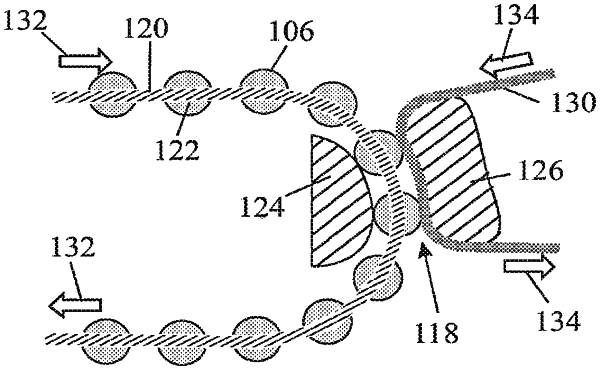| CPC B41F 17/22 (2013.01) [B41F 1/16 (2013.01); B41F 13/0008 (2013.01); B41F 17/006 (2013.01); B41J 3/4073 (2013.01); B41J 3/40733 (2020.08); B41J 11/002 (2013.01); B41J 11/00214 (2021.01)] | 20 Claims |

|
1. A method of printing on the outer surfaces of generally cylindrical objects, which method comprises:
(a) mounting at a loading station each object on a respective mandrel rotatable about an axis, the mandrels being rotatably connected to a drive member of a transport mechanism;
(b) advancing the objects while mounted on the mandrels through an impression station that includes a moving imaging surface bearing an ink image;
(c) rotating each object about the axis of its respective mandrel during passage through the impression station while urging the object against the imaging surface, such that the surface of the object makes rolling contact with the imaging surface within a nip region, thereby causing the ink image to be impressed on the surface of the object, wherein the object is urged into rolling contact with the imaging surface during passage through the impression station by an impression platen provided in the nip region of the impression station on the opposite side of the objects from the imaging surface, the impression platen being configured to apply a force, directly or by way of the mandrels, to the objects to ensure rolling contact between the surface of the objects and the imaging surface, and being stationary at least in the direction of movement of the imaging surface within the nip region; and
(d) removing at an unloading station each object from its respective mandrel after passage through the impression station.
|